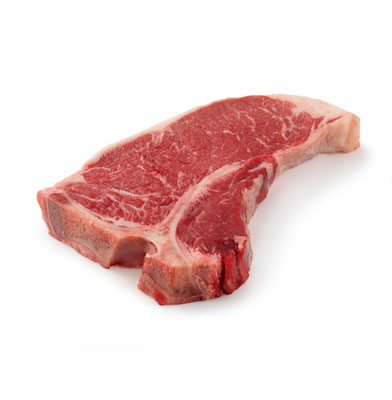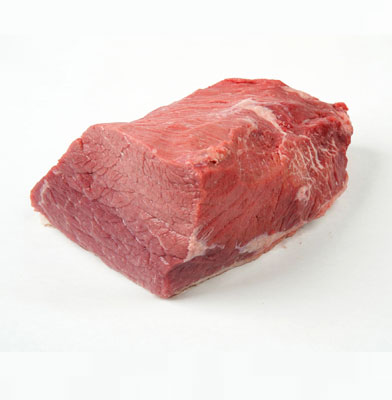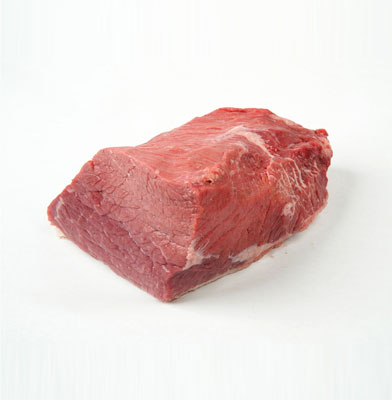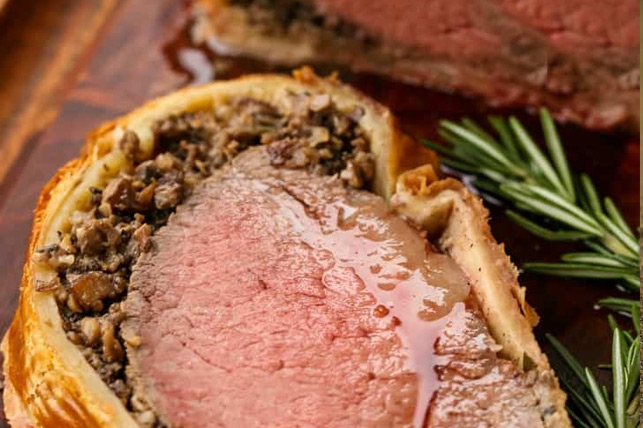Beef Wellington
Ingredients
- 2 1/2 pounds beef tenderloin
- 2 tablespoons butter, softened
- 2 tablespoons butter
- 1 onion, chopped
- 1/2 cup sliced fresh mushrooms
- 2 ounces liver pate
- 2 tablespoons butter, softened
- salt and pepper to taste
- 1 (17.5 ounce) package frozen puff pastry, thawed
- 1 egg yolk, beaten
- 1 (10.5 ounce) can beef broth
- 2 tablespoons red wine
Method
- Preheat oven to 425 degrees F (220 degrees C). Place beef in a small baking dish, and spread with 2 tablespoons softened butter. Bake for 10 to 15 minutes, or until browned. Remove from pan, and allow to cool completely. Reserve pan juices.
- Melt 2 tablespoons butter in a skillet over medium heat. Saute onion and mushrooms in butter for 5 minutes. Remove from heat, and let cool.
- Mix together pate and 2 tablespoons softened butter, and season with salt and pepper. Spread pate over beef. Top with onion and mushroom mixture.
- Roll out the puff pastry dough, and place beef in the center. Fold up, and seal all the edges, making sure the seams are not too thick. Place beef in a 9x13 inch baking dish, cut a few slits in the top of the dough, and brush with egg yolk.
- Bake at 450 degrees F (230 degrees C) for 10 minutes, then reduce heat to 425 degrees F (220 degrees C) for 10 to 15 more minutes, or until pastry is a rich, golden brown. Set aside, and keep warm.
- Place all reserved juices in a small saucepan over high heat. Stir in beef stock and red wine; boil for 10 to 15 minutes, or until slightly reduced. Strain, and serve with beef.

Cheek
Cooking Methods

Cheek RECIPES

Blade / Chuck
Cooking Methods

Blade / Chuck RECIPES

Cube Roll / Ribs
Chuck Short Ribs are removed from the Chuck and include the ribs, intercostal muscles and a major portion of the muscle overlying the ribs. Slow cooked, beef chuck ribs are both tender and flavoursome. Grilling chuck ribs prior to consumption assists with the caramelisation of marinades and fat.
Cooking Methods



Cube Roll / Ribs RECIPES

Striploin / Shortloin
Cooking Methods

Striploin / Shortloin RECIPES

Rump
The Rump is prepared from the Hindquarter and is removed by separating the Rump from the Shortloin. The rump consists of a number of hindquarter muscles. Compared to some of the muscles making up the other hindquarter primal cuts the rump muscles do less work on the animal and are therefore reasonably tender. A boneless cut, the Rump is very flavoursome and well suited to roasting.
Cooking Methods

Rump RECIPES

Silverside / Topside
Cooking Methods

Silverside / Topside RECIPES

Tenderloin
The Tenderloin is located in the hindquarter of the animal and does very little work. As a result the tenderloin is very lean and tender, and should be cooked using very hot temperatures to sear and retain moisture. A denuded tenderloin has been trimmed of the silverskin and can be roasted whole.
Cooking Methods




Tenderloin RECIPES

Skirt
Cooking Methods

Skirt RECIPES

Brisket
Brisket consists of well exercised muscles located in chest and underside regions of the carcass. It is removed from the forequarter between the 1st rib to the 13th rib. This cut is best slow cooked and braised as it contains connective tissue that needs softening. Brisket is flavoursome and is perfect for shredding.
Cooking Methods


Brisket RECIPES

Shin
Cooking Methods

Shin RECIPES

Plate
Cooking Methods

Plate RECIPES

Flank
Cooking Methods

Flank RECIPES

Knuckle
Cooking Methods

Knuckle RECIPES

Other
Cooking Methods

Other RECIPES

Bone in Blade Steak (Y-Bone Steak)
Y-bone steak comes from the shoulder blade and is a very under rated steak. If your on a budget this steak ticks all the boxes, its tasty, its tender and best of all its great price.
Cooking Methods

Bone in Blade Steak (Y-Bone Steak) RECIPES

Blade Roast
The Blade roast is a flavoursome cut of meat that is best cooked by moist heat methods such as braising or roasting in liquid. Slow cooking helps to soften the connective tissue located between the muscles of this cut.
Cooking Methods



Blade Roast RECIPES

Boneless Blade Steak
Blade steak is from the shoulder region and is made up of several muscles with layers of fat and connective tissue within them. Blade steak is a versatile cut with a great flavour which can be cooked as is, cut into strips for stir-fries or diced for slow-cooking.
Cooking Methods




Boneless Blade Steak RECIPES

Oyster Blade Steak
The oyster blade is the muscle that sits below the shoulder blade, bisected by a long line of thin connective tissue. When separated from the shoulder, it's cut into steaks. When cooking oyster blade steak it is important to score or remove the centre gristle to prevent curling when cooking. Cut into thin strips, oyster blade steaks are also suited to stir-fries.
Cooking Methods



Oyster Blade Steak RECIPES

Chuck
The chuck contains a mix of meat, fat and connective tissue that when braised or stewed is flavoursome and tender.
Cooking Methods


Chuck RECIPES

Diced Chuck
Chuck Diced is used in casseroles or slow moist cooking methods such as braising. The connective tissue gently melts allowing the meat to become very tender as well as adding to the flavour.
Cooking Methods


Diced Chuck RECIPES

Porterhouse (Sirloin Steak Bone-in)
Big flavor and often big enough for two. Simply season this sublime combination of Strip and Tenderloin for the grill or oven.
Cooking Methods




Porterhouse (Sirloin Steak Bone-in) RECIPES

Sirloin Roast
The Striploin is also known as the Sirloin and runs near the spine on the hindquarter of an animal. As a larger portion this cut can produce a tender, flavoursome roast.
Cooking Methods

Sirloin Roast RECIPES

T-Bone Steak
The T-bone steak consists of two primals, the Tenderloin and Striploin. Named for its T-shaped bone this steak is best grilled or barbecued.
Cooking Methods


T-Bone Steak RECIPES

Rump Steak
Rump steaks are cut from a whole D-Rump and are generally known as 'full face' rump steaks. The fat layer from the rump cap is usually retained. Rump steaks are best grilled or barbequed and offer a strong meaty flavour.
Cooking Methods


Rump Steak RECIPES

Rump Roast
Rump roast is a boneless piece of beef, cut from the hindquarter that covers the hip bone. It’s made up of three of the five rump muscles that do little work resulting in a mix of textures and levels of tenderness. Full of flavour, rump roast is succulent and tender when roasted or diced for casseroles.
Cooking Methods


Rump Roast RECIPES

Rump Medallion
Beef Rump medallions are cut from the Eye of Rump where the Rostbiff has been trimmed of the 'undercut' muscles and connective tissue and portioned length-ways into logs. Portions cut from these logs are known as Beef Rump medallions. The medallions are perfect for pan-frying, grilling or the barbecue.
Cooking Methods


Rump Medallion RECIPES

Tenderloin Steak
Tenderloin Steaks are suited to grilling or pan frying and preferably served medium rare. Centre cut tenderloin portions are taken from the middle section of the tenderloin that consists of one muscle. The butt end of the tenderloin contains two other muscles that are not included when cutting centre cut steaks.
Cooking Methods




Tenderloin Steak RECIPES

Eye Fillet - Centre Cut
The eye fillet centre cut is tender and juicy with a delicate flavour. Cut from the centre of one of only two tenderloins, it comes from the muscle that does the least amount of work. With little or no fat or connective tissue, this cut is very lean. It can be oven-roasted, cut into steaks, or sliced into strips for stir-fries.
Cooking Methods




Eye Fillet - Centre Cut RECIPES

Butt Fillet
The butt fillet comes from the larger end of the tenderloin and is a tender cut of beef due to the little amount of work it undertakes. Butt fillet can be roasted whole or prepared further into steaks. Because it’s so lean and tender, it is best suited to fast, hot cooking methods ensure it retains moisture, flavour and tenderness.
Cooking Methods



Butt Fillet RECIPES

Outside Skirt
Opposite the Inside Skirt Steak, this cut is known for its robust flavor profile. Marinate and grill hot for fajitas or use for stir-fry.
Cooking Methods



Outside Skirt RECIPES

Topside Roast
The topside roast is the inner thigh muscle, taken from the hind leg by following the natural seam between the knuckle and the silverside. As a well-used muscle, it’s extremely lean with a lot of connective tissue. Topside roast also performs well diced and cooked low and slow in a casserole or braise.
Cooking Methods


Topside Roast RECIPES

Topside Steak
After removal of the Topside Cap, the Topside is trimmed and then portioned for schnitzels or sandwich steaks. These steaks need to be thin when cooked at high temperatures due to the high connective tissue content. Steaks can be further sliced and diced for stir fry and casseroling respectively.
Cooking Methods




Topside Steak RECIPES

Silverside Steak
Silverside comes from the outside of the rear leg and sits between the knuckle and the topside. It’s named after the silver wall of connective tissue that sits on the side of the cut, removed before cooking. Because this cut comes from well-exercised muscles, it needs the gentle moist cooking method of corning. The resulting texture melts off the fork. Carve it fat side up, across the grain to ensure maximum tenderness.
Cooking Methods

Silverside Steak RECIPES

Eye of Round (Girello)
Eye Round is a single muscle that is removed from the Outside and can be used for a small roast or slow, low moist heating methods.
Cooking Methods



Eye of Round (Girello) RECIPES

Gravy Beef (Boneless Shin)
Beef Shin Meat is derived from the muscles removed from the fore and hind shank bones. Shin meat contains a lot of connective tissue and therefore needs to be cooked using a long, low moist cooking methods.
Cooking Methods


Gravy Beef (Boneless Shin) RECIPES

Osso Bucco (Shin Bone-In)
Shin slices are derived from the shank and can be deboned if required. Osso bucco is usually cut from the Hind Shank due to the consistent circular shape of the bone. Osso bucco cut from the Hind shank is ideally cooked by moist cooking methods such as stewing and braising. The bone can be removed from the shanks to create 'gravy' steaks.
Cooking Methods


Osso Bucco (Shin Bone-In) RECIPES

Rolled Brisket
Filled with flavor, Rolled Brisket is a Beef cut that is preferred by many due to its low price. The cut has a significant amount of fat, which adds to its richness and tenderness. The Rolled Brisket comes from the Brisket (breast) section and is cut from the rear portion of lean meat and fat closest to the plate layers. The breast and rib bones are removed.
Cooking Methods



Rolled Brisket RECIPES

Round Steak
A round steak is a beef steak from the \"round\", the rear leg of the cow. The round is divided into cuts including the eye (of) round, bottom round, and top round, with or without the "round" bone (femur), and may include the knuckle (sirloin tip), depending on how the round is separated from the loin. This is a lean cut and it is moderately tough. Lack of fat and marbling makes round dry out when cooked with dry-heat cooking methods like roasting or grilling. Round steak is commonly prepared with slow moist-heat methods including braising, to tenderize the meat and maintain moisture. The cut is often sliced thin, then dried or smoked at low temperature to make jerky.
Cooking Methods




Round Steak RECIPES

Knuckle Medallion
Knuckle steaks are also known as 'Round steaks', 'Minute steaks' or 'Medallions'. They are best suited to moist, slow cooking methods however they can be roasted if sealed by pan frying first to prevent them from drying out. Knuckle steaks can also be used for schnitzel.
Cooking Methods




Knuckle Medallion RECIPES

New York Cut (Striploin Steak Boneless)
Prepared from the Shortloin by removal of the Tenderloin and all bones. Also known as Porterhouse, Sirloin or New York Cut. Excellent for grilling and barbecuing.
Cooking Methods


New York Cut (Striploin Steak Boneless) RECIPES

Inside Skirt
Inside skirt found opposite the Outside Skirt Steak, this cut is known for its robust flavor profile. Marinate and grill hot for fajitas or use for stir-fry. This cut comes from the short primal plate section right under the rib primal with a higher fat content. Skirt Steak is a thin, flavorful cut that's best when marinated and seared over high heat.
Cooking Methods




Inside Skirt RECIPES

Chuck Neck Roast
Chuck neck roast is rich in flavor and tender after slow-cooking.
Cooking Methods



Chuck Neck Roast RECIPES

Point End Brisket
Point End Brisket is part of the brisket closest to the head of the animal. Usually this is sold as 'deckle off', where the connective tissue holding the muscles to the rib cage is removed. Slow cook this cut to render down the fat and connective tissue.
Cooking Methods


Point End Brisket RECIPES

Navel End Brisket
Navel End Brisket is part of the brisket closest to the navel of the animal. The Navel End Brisket usually contains more fat than the Point End Brisket. Slow cook this cut to render down the fat and connective tissue.
Cooking Methods


Navel End Brisket RECIPES

Bolar Blade
Bolar Blade is prepared from a whole Blade by removal of the Oyster Blade along the natural seam.
Cooking Methods



Bolar Blade RECIPES

Oyster Blade
Oyster Blade Steak is removed from the Bolar Blade by separation along the natural seam. Roasting assists with the breakdown of the connective tissue in this cut.
Cooking Methods



Oyster Blade RECIPES

Chuck Tender
The chuck tender gets its name from its shape - long and narrow with a pointed tip, similar to a Tenderloin—rather than its tenderness. The muscle is very lean and should be slow-cooked rather than roasted or grilled.
Cooking Methods


Chuck Tender RECIPES

Flank Steak
Taken from the muscle beneath the loin in the abdominal area. The flank steak is incredibly lean, and practically free of connective tissue so very little trimming is required. Flank steaks are incredibly flavoursome and easy to cook. Due to the coarse grain that runs along the length, Flank Steaks are ideal when prepared with rubs & marinades.
Cooking Methods




Flank Steak RECIPES

Flap Meat
A boneless cut with a hearty texture that's a good source for fajita meat. Marinate and grill or broil.
Cooking Methods



Flap Meat RECIPES

Rostbiff
The Rostbiff is prepared from the Rump by removal of the Rump Cap along the natural seam. The Rostbiff contains very little subcutaneous fat. The flavours of this cut come to life when roasted.
Cooking Methods

Rostbiff RECIPES

Tri Tip
The Tri-tip is a flavoursome triangular and flat shaped cut removed from the Rump. It can be roasted whole or cut into small steaks for grilling or barbecuing.
Cooking Methods


Tri Tip RECIPES

Topside
Also known as Beef Inside. The muscles of the Topside are well exercised and therefore are quite lean and contain connective tissue. Best cooking methods for this cut as a whole portion are braising and casseroling.
Cooking Methods


Topside RECIPES

Outside
Largest section of the full Bottom Round that is separated from the Heel and can be cut into Bottom Round Roasts or Steaks. Lean and benefits from tenderization.
Cooking Methods



Outside RECIPES

Outside Flat
The Outside Flat is derived from the Outside after the Eye Round has been removed. It is commonly used for corned beef or cooked using slow moist cooking methods as its dense lean muscle structure means its prone to drying out.
Cooking Methods


Outside Flat RECIPES

Knuckle
The beef Knuckle is derived from the Thick flank by removal of the Knuckle cap. The Eye of Knuckle is the centre muscle that contains less connective tissue than the other thick flank muscles and is well suited to moist slow cook methods.
Cooking Methods



Knuckle RECIPES

Heel Muscle
The heel muscle is seam cut and two tender muscles are removed to use this pavé. A section of coarse grain meat is removed.
Cooking Methods


Heel Muscle RECIPES

Plate Short Ribs
The section right under the rib primal with a higher fat content. The Short Plate is a source of Short Ribs, exhibiting good beef flavour the plate short ribs are good braised or on the grill with your favourite rub.
Cooking Methods


Plate Short Ribs RECIPES

Ribeye (scotch Fillet) Steak
A Rib Eye steak is portioned from an OP Rib and contains a Rib bone. The standing rib muscles are not required to do much work on an animal and therefore are very tender. These steaks are best grilled or barbecued.
Cooking Methods


Ribeye (scotch Fillet) Steak RECIPES

Ribeye Roll
This exceptionally tender and flavorful boneless roast consists of three muscles that are fabricated into the Ribeye Steak, Ribeye Roast, and sometimes Ribeye Filet and Ribeye Cap Steak.
Cooking Methods



Ribeye Roll RECIPES

Chuck Ribs (Back Ribs)
Back Ribs are the rib bones after removal of the rib set from the prepared rib. The meat is contained between the ribs and is very flavoursome. Back ribs are best slow cooked or braised to soften the connective tissue that holds the meat to the ribs.
Cooking Methods



Chuck Ribs (Back Ribs) RECIPES

Short Ribs
Short Ribs contain rib bones left after the removal of the Prepared Ribs, Chuck and Brisket from the Forequarter. Beef Short Ribs contain good layers of muscle and fat and are ideally slow cooked initially to soften the connective tissue prior to barbecuing or grilling.
Cooking Methods


Short Ribs RECIPES

Tomahawk Steak
Situated under the front section of the backbone and used primarily for support. Popular cuts from the Rib include the rich, flavorful Ribeye Steak and the Prime Rib Roast. Tender bone-in steak from the Rib with a long bone and marbling that adds flavor. Simply season and grill.
Cooking Methods


Tomahawk Steak RECIPES

Rib Cutlet - Cowboy Steak
Tender, bone-in steak with a frenched rib presentation that is great for the grill.
Cooking Methods


Rib Cutlet - Cowboy Steak RECIPES

Cube Roll Roast (Scotch Fillet / Ribeye)
The Cube Roll Roast is also known as the Scotch Fillet or Boneless Rib Eye. It is best cooked as a roast and served medium rare.
Cooking Methods

Cube Roll Roast (Scotch Fillet / Ribeye) RECIPES

Hanger Steak
The Hanger Steak comes from the upper (lumbar) portion of the diaphragm. Not usually known as a tender cut, the Hanger needs to be cooked quickly over a high heat. For maximum tenderness slice against the grain before serving.
Cooking Methods




Hanger Steak RECIPES

Cheek
Cheek is the hard-working, lean facial cheek muscle, housing an abundance of connective tissue, known as collagen. This cut responds well to moist, slow extended cooking methods. As the collagen breaks down, it produces a tender and flavoursome result. Cheek is perfect diced in curries, braises and stews, but also holds its shape well when cooked whole.
Cooking Methods



